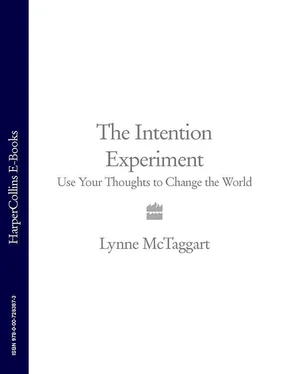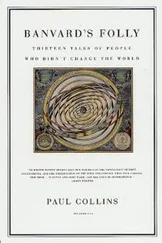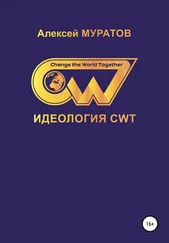The best Schwartz and Connor could come up with on their limited budget was a poor man’s SQUID – a small handheld, battery-operated three-axis digital gaussmeter originally designed to measure electromagnetic pollution by picking up extra-low-frequency (ELF) magnetic fields. The gaussmeter was sensitive enough to pick up one-thousandth of a gauss, a very faint pulse of a magnetic field. In Schwartz’s mind, this level of sensitivity was more than adequate to do the job.
It occurred to Connor that the way to measure change in low-frequency magnetic fields was to count the number of changes in the meter reading over time. When simply recording ambient stable magnetic fields, the device will only deviate slightly – by less than one-tenth of a gauss. However, in the presence of an oscillating magnetic field – with periodic changes in frequency – the numbers will keep moving, from, say, 0.6 to 0.7 to 0.8, and back down to 0.6. The greater and more frequent the change, which would be recorded by the number of changes in the dials, the more likely it is that the magnetic field has been affected by a source of directed energy.
Connor and Schwartz gathered together a group of practitioners of Reiki, the healing art developed a century ago in Japan. They took measurements near each hand of all the healers during alternating periods while they were ‘running energy’ and then during times they were at rest, with their eyes closed. Next, the pair assembled a group of ‘master healers’ with a substantial track record of successful, dramatic healings. Again, Connor and Schwartz took magnetic field measurements near each hand, while the master healers were running energy and at rest. Then, they compared the Reiki measurements with measurements they had taken of people who had not been trained in healing.
Once Schwartz and Conner had analysed the data, they discovered that both groups of healers demonstrated significant fluctuations in very low pulsations of a magnetic field, emanating from both hands. A huge increase in oscillations in the magnetic field occurred whenever a healer began to run energy. However, the most profound energy increase surged from their dominant hands. The control group of people who were not trained healers did not demonstrate the same effect.
Then Schwartz compared effects from the Reiki group with those of the master healers and discovered another enormous difference. The master healers averaged close to a third more magnetic-field changes per minute than the Reiki healers. 12
The study results seemed clear. Schwartz and Connor had their proof that directed intention manifests as both electrostatic and magnetic energy. But they also discovered that intention was like playing the piano; you need to learn how to do it, and some people do it better than others.
In considering what this all meant, Gary Schwartz thought of the phrase often used by medical doctors, usually in emergency situations: when you hear hoof beats, don’t think zebras . In other words, when you are trying to diagnose someone with physical symptoms, first rule out all the most likely causes, and only then consider more exotic possibilities. He liked to approach science in the same way and so he questioned his own findings: Could the healers’ increase in magnetic field oscillations during healing simply be the result of certain peripheral biophysical changes? Muscle contractions generate a magnetic field, as do changes in blood flow, the increasing or decreasing dilation of blood vessels, the body’s current volume of liquid or even the flow of electrolytes. Skin, sweat glands, change of temperature, neural induction – all generate magnetic fields. His guess was that healing resulted from a summation of multiple biological processes that are mediated magnetically.
But the possibility that healing might be a magnetic effect did not explain long-distance remote healing. In some instances, healers sent healing from thousands of miles away and the effect did not decay with distance. In one successful study of AIDS patients who improved through remote healing, the 40 healers involved in the study sent the healing to the San Francisco patients from locations all across America. 13Similar to electrical fields, magnetic fields decrease with distance. The magnetic and electrical effects were likely to be some aspect of the process, but not its central one. It was likely to be closer to a quantum field, possibly more akin to light.
Schwartz began to consider the possibility that the mechanism creating intention originated with the tiny elements of light emitted from human beings. In the mid-1970s, a German physicist named Fritz-Albert Popp had stumbled upon the fact that all living things, from the most basic of single-celled plants to the most sophisticated of organisms like human beings, emitted a constant tiny current of photons – tiny particles of light. 14He labelled them ‘biophoton emissions’ and believed that he had uncovered the primary communication channel of a living organism – that it used light as a means of signalling to itself and to the outside world.
For more than 30 years, Popp has maintained that this faint radiation, rather than biochemistry, is the true driving force in orchestrating and coordinating all cellular processes in the body. Light waves offered a perfect communication system able to transfer information almost instantaneously across an organism. Having waves, rather than chemicals, as the communication mechanism of a living being also solved the central problem of genetics – how we grow and take final shape from a single cell. It also explains how our bodies manage to carry out tasks with different body parts simultaneously. Popp theorized that this light must be like a master tuning fork setting off certain frequencies that would be followed by other molecules of the body. 15
A number of biologists, such as the German biophysicist Herbert Fröhlich, had proposed that a type of collective vibration causes proteins and cells to coordinate their activities. Nevertheless, all such theories were ignored until Popp’s discoveries, largely because no equipment was sensitive enough to prove they were right.
With the help of one of his students, Popp constructed the first such machine – a photomultiplier that captured light and counted it, photon by photon. He carried out years of impeccable experimentation that demonstrated that these tiny frequencies were mainly stored and emitted from the DNA of cells. The intensity of the light in organisms was stable, ranging from a few to several hundred photons per second per square centimetre surface of the living thing – until the organism was somehow disturbed or ill, at which point the current went sharply up or down. The signals contained valuable information about the state of the body’s health and the effects of any particular therapy. Cancer victims had fewer photons, for instance. It was almost as though their light were going out.
Initially vilified for his theory, Popp was eventually recognized by the German government and then internationally. Eventually he formed the International Institute of Biophysics (IIB), composed of 15 groups of scientists from international centres all around the world, including prestigious institutions like CERN in Switzerland, Northeastern University in the USA, the Institute of Biophysics Academy of Science in Beijing, China, and Moscow State University in Russia. By the early twenty-first century, the IIB numbered at least 40 distinguished scientists from around the globe.
Could it be that these were the frequencies that mediated healing? Schwartz realized that if he was going to carry out studies of biophoton emissions, first he had to figure out how to view these tiny emissions of light. In his laboratory, Popp developed a computerized mechanism attached to a box in which a living thing, such as a plant, could be placed. The machine could count the photons and chart the amount of light emitted on a graph. But those machines only recorded photons in utter pitch blackness. Up until then, it had been impossible for scientists to witness living things actually glowing in the dark.
Читать дальше











